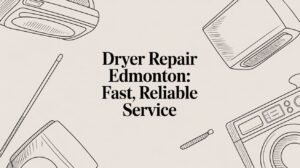A refrigerator is an essential appliance in any household, crucial for preserving food and maintaining freshness. However, when your Kenmore fridge stops cooling but the freezer continues to work, it can be both puzzling and frustrating. Understanding the root cause of this issue is vital to ensure your appliance functions correctly and your food stays fresh.
Potential Causes
1. Blocked Air Vents
Blocked air vents are a common reason why your fridge may not be cooling. Air vents between the freezer and refrigerator compartments allow cold air to circulate. If these vents are blocked by food items or ice buildup, the fridge won’t cool properly.
2. Faulty Evaporator Fan
The evaporator fan is responsible for circulating cold air from the freezer to the fridge. If the fan is faulty or not working, the freezer may stay cold, but the fridge will not receive adequate airflow to maintain its temperature.
3. Damaged or Faulty Thermistor
The thermistor monitors the temperature inside the fridge and sends this information to the control board. If the thermistor is damaged or faulty, it may not signal the control board correctly, leading to improper cooling.
4. Defrost System Issues
Problems with the defrost system can lead to ice buildup on the evaporator coils. This ice buildup can block airflow and prevent the fridge from cooling properly. The defrost system includes components like the defrost timer, heater, and thermostat, any of which can cause issues.
5. Dirty Condenser Coils
Condenser coils dissipate heat from the fridge. If these coils are dirty or covered in dust, they cannot release heat effectively, causing the fridge to struggle in maintaining cool temperatures.
6. Temperature Control Board Problems
The temperature control board regulates the fridge’s cooling system. If the control board malfunctions, it may not signal the necessary components to cool the fridge properly, even if the freezer remains operational.
Diagnosing the Problem
Visual Inspection
Start by visually inspecting the fridge and freezer compartments. Look for any obvious blockages in the air vents or signs of ice buildup. Check the condenser coils for dust and debris.
Listening for Unusual Noises
Unusual noises can indicate a problem with the evaporator fan or other components. If you hear clicking, buzzing, or humming sounds, it might be a sign of a malfunctioning part.
Checking Temperature Settings
Ensure that the temperature settings are correct for both the fridge and freezer compartments. Sometimes, simple adjustments can resolve cooling issues.
Testing Components
Testing various components such as the evaporator fan, thermistor, and defrost system can help pinpoint the issue. Use a multimeter to check for continuity and functionality.
Detailed Explanations and Solutions
1. Blocked Air Vents
Air vents between the freezer and fridge compartments allow cold air to circulate. When these vents are blocked, cold air cannot flow properly, resulting in a warm fridge.
How to Clear Blockages:
- Move any food items away from the vents.
- Check for and remove any ice buildup around the vents.
2. Faulty Evaporator Fan
Function and Importance:
The evaporator fan circulates cold air from the freezer to the fridge. Without it, the fridge cannot maintain a cool temperature.
Signs of a Faulty Fan:
- Freezer is cold, but the fridge is warm.
- The fridge makes unusual noises.
Replacement Process:
- Unplug the refrigerator.
- Locate the evaporator fan (typically behind the back panel of the freezer).
- Remove the old fan and install a new one.
3. Damaged or Faulty Thermistor
Role of the Thermistor:
The thermistor measures the temperature inside the fridge and sends the information to the control board.
Symptoms of Failure:
- Incorrect temperature readings.
- Fridge not cooling properly.
How to Test and Replace:
- Use a multimeter to test the thermistor for continuity.
- Replace it if it shows signs of failure.
4. Defrost System Issues
Overview of the Defrost System:
The defrost system prevents ice buildup on the evaporator coils.
Common Problems and Fixes:
- Defrost timer not advancing: Replace the timer.
- Defrost heater not working: Test and replace the heater if necessary.
- Defrost thermostat malfunctioning: Test and replace the thermostat.
5. Dirty Condenser Coils
Impact on Cooling Efficiency:
Dirty condenser coils reduce the fridge’s ability to dissipate heat, causing cooling issues.
Cleaning Procedure:
- Unplug the fridge.
- Locate the condenser coils (usually at the back or bottom of the fridge).
- Use a coil brush or vacuum to remove dust and debris.
6. Temperature Control Board Problems
Role of the Control Board:
The control board regulates the fridge’s cooling system.
Diagnosing Control Board Issues:
- Inconsistent cooling performance.
- Failure of other diagnostic tests.
Replacement Steps:
- Unplug the fridge.
- Locate the control board (typically behind a panel at the back of the fridge).
- Remove the old board and install a new one.
When to Call a Professional
If you have tried diagnosing and fixing the issue but your Kenmore fridge still isn’t cooling properly, it might be time to call one of our professionals. Our professional technicians have the tools and expertise to diagnose and repair complex issues that may be beyond DIY fixes.
Preventive Measures
Regular Maintenance Tips
- Clean condenser coils every six months.
- Check and clear air vents regularly.
- Ensure the fridge is not overloaded with food items.
How to Avoid Common Issues
- Keep temperature settings at manufacturer-recommended levels.
- Avoid placing hot food directly into the fridge.
- Ensure the fridge door seals are intact and clean.
Conclusion
Understanding why your Kenmore fridge is not cooling while the freezer works is essential for resolving the issue. By identifying potential causes such as blocked air vents, faulty evaporator fans, or defrost system problems, you can take appropriate steps to fix the problem. Regular maintenance and timely Kenmore Fridge repairs can help ensure your refrigerator continues to function efficiently.
FAQs about Kenmore Fridge Cooling Issues
How often should I clean the condenser coils?
It’s recommended to clean the condenser coils every six months to ensure optimal performance.
Can a refrigerator work without a functioning evaporator fan?
No, the evaporator fan is crucial for circulating cold air from the freezer to the fridge compartment. Without it, the fridge cannot maintain a cool temperature.
What is the typical lifespan of a Kenmore refrigerator?
A Kenmore refrigerator typically lasts around 10-15 years with proper maintenance and care.



